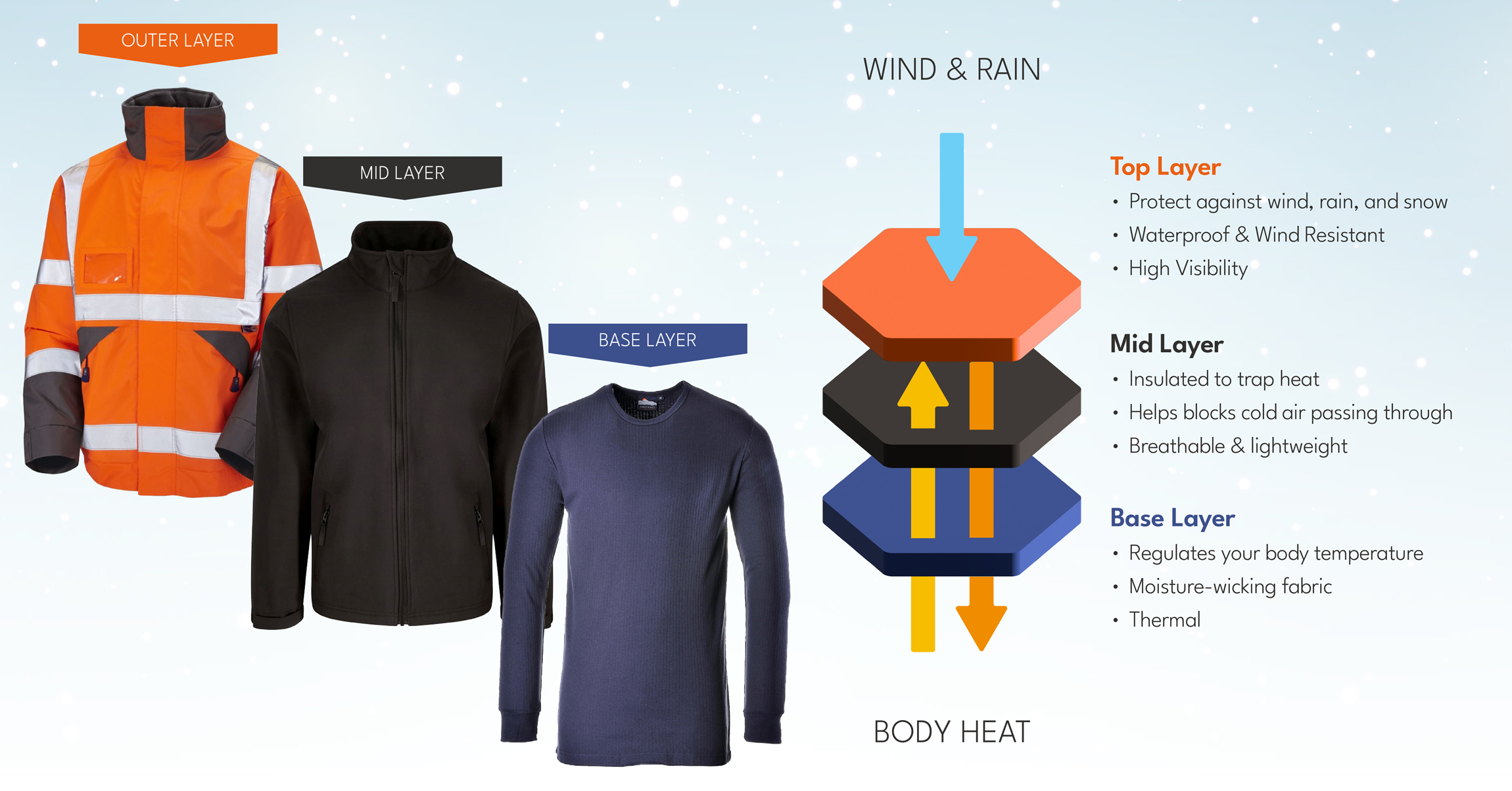
Winter presents unique and potentially hazardous challenges for workers, especially those who operate outdoors or in environments exposed to cold weather. From icy surfaces to decreased daylight hours, understanding how to stay safe during this season is not just important, but essential for employees and employers.
The Importance of Winter Workplace Safety
The Health and Safety Executive (HSE) reports that 561,000 workers suffered non-fatal workplace injuries in the UK during 2022/23, and slips, trips, and falls remain one of the most common causes of these incidents. Winter exacerbates these risks, with icy and wet surfaces significantly increasing the likelihood of accidents. Additionally, cold exposure can lead to severe health conditions, including frostbite and hypothermia, particularly for outdoor workers.
Dressing for Winter: The Art of Layering
Exposure to cold environments can lead to cold stress, which includes hypothermia and frostbite. Employers should educate workers on recognising symptoms such as shivering, numbness, and confusion and ensure regular breaks in heated shelters and warm beverages are readily available.
Workplace ill health statistics reveal that 1.7 million workers in the UK experienced work-related ill health in 2023/24, with 32% suffering from musculoskeletal issues. Cold temperatures can aggravate these conditions, emphasising the need for ergonomic tools and regular movement. Layering is essential to staying warm and safe in freezing conditions.
For the UK’s often damp winters, a three-layer system works best:
1. Choose a base layer to keep moisture away
The base layer regulates your body temperature while removing moisture. We recommend selecting either a thermal or cool viz base layer, as the antibacterial moisture-wicking fabric is breathable and keeps you dry and warm.
2. Select a middle layer to insulate
The primary function of the mid-layer is to provide insulation and block cold air from passing through your body. Depending on your working conditions, mid-layer options could range from soft-shell jackets, fleeced sweatshirts, long-sleeve sweatshirts, or bodywarmers.
3. The outer layer is for maximum protection
The external layer primarily protects from wind, rain, and snow. We recommend choosing a high-visibility outer layer that is waterproof and wind-resistant, with either a quilt or fleece lining to withstand the elements while keeping you warm and visible.
Employers should provide appropriate Personal Protective Equipment (PPE) to reduce injury risks, such as insulated gloves and boots with slip-resistant soles. Proper footwear is critical, as statistics show that falls from height, including slips, are one of the leading causes of workplace fatalities, with 40 deaths recorded in 2023.

Adapting to Limited Daylight
The UK’s shorter winter days can make visibility challenging. This is particularly important in industries like construction and logistics, where proper lighting is critical for safety. Reflective gear and portable lighting solutions can mitigate these risks.
Building a Winter Safety Culture
A proactive approach can significantly reduce winter workplace incidents. Simple measures include:
- Conducting daily inspections of walkways and entrances to clear ice and snow.
- Providing employees with weather updates and safety reminders.
- Ensuring access to first aid kits designed for cold injuries.
Winter Safety: An Employer’s Responsibility
Ultimately, safety during winter requires collaboration between employers and employees. Employers must stay compliant with regulations, offering proper training and resources, while employees should remain vigilant and report hazards promptly. The cost of workplace injuries reached a staggering £20.7 billion in 2022/23, highlighting the significant financial and human impact of insufficient safety measures.
By embracing these practices, workplaces can navigate the challenges of winter safely, ensuring that employees return home safe and healthy every day.




![stronghold global logo[94]](https://www.strongholdglobal.com/wp-content/uploads/2022/03/Stronghold-Global-Logo94.png)




